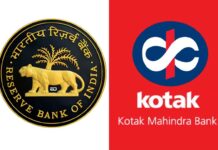Have you heard of Snapdeal lately? Snapdeal, for those who don’t know, is an e-commerce website that sells goods just like any other e-commerce giant, like Flipkart or Amazon.
Snapdeal was one of the popular sellers when it started, thanks to the low cost of the commodities sold, however, it soon lost its charm when the goods delivered were found of poor and inferior quality.
Now, Snapdeal has once again sprang in news, thanks to the financial venture it is undertaking. Snapdeal has requested the Securities and Exchange Board of India (SEBI) to approve its initial public offer of Rs. 125 crore. In the offer, the company plans to raise the said amount by offering 30.77 million shares for sale.
However, two big questions that stand before the e-commerce company before going ahead with the IPO are:
- Who even buys from Snapdeal?
- Will the IPO be a success?

Who Buys From Snapdeal?
Snapdeal was started a decade ago and was successful in rivaling giants like Amazon.com Inc and Walmart Inc’s Flipkart. However, as fast as it rose to success, it fell deep in losses as the revenue dipped by 44 percent at the end of the financial year 2021. The revenue stood at Rs. 4.7 billion on 31st March 2021, which was at a loss.
Because of this reason, the news of Snapchat’s IPO has taken everyone by surprise. The company isn’t selling highly and has a poor reputation regarding the quality of the products, then how is it keeping afloat?
The founder, Kunal Bahl, answered this question recently saying that he is asked the same question a lot of times. He went on to say that the brand largely caters to the middle-income group population hailing from tier-2 cities and beyond.
As per them, their idea is to serve the best available at the lowest price, not to the people coming from those cities where Amazon and Flipkart are not able to deliver promptly. Their customers are mostly people who drive two-wheelers and look for value for money rather than premium quality.
Well, it does make sense because the inhabitants of galis and mohallas of the tier-2 and tier-3 cities of India want to get the product at the best value. They want affordable commodities and quality doesn’t pose a great issue here.
Thus, they serve as an apt market for a brand like Snapdeal that has tarnished its reputation pretty much in the urban cities. And mind you, I am not making empty claims.
I once myself ordered a saree from the website but it wasn’t up to the mark and later, my friends who ordered from the same website had their share of issues too with the quality of the product they got.
In toto, it can be said that Snapdeal’s customers live in the interior parts of India and that’s what has been able to keep the company afloat, apart from its investors, like Softbank.
Read Also: With New Unicorns And IPOs By Startups, Is India Actually Earning?
Will The IPO Be Successful?
IPOs have always been a tough bet when it comes to startups. Rather, it would be fit to say that any company coming forward with an IPO takes a huge risk and so do the investors.
Snapdeal is attempting an Rs. 125 crore IPO which is big enough to create huge speculations in the market. The brand has potentially lost trust from urban consumers, who happen to be the largest investors in the share market. This might work against the company’s interests when launching an IPO.

Snapdeal currently has 71 shareholders, including 35.41 per cent equity of Softbank and 20.28 per cent combined equity of founders Kunal Bahl and Rohit Bansal. The founders are not diluting their share in the IPO, thus the investors are.
The question arises why would the investors dilute their equity in a profitable venture. It’s most unlikely for a profitable venture to raise funds from the market until and unless they want to have a global presence or want huge sums of money which no investor can provide. The second case can be found to be true here, since Rs. 125 crore is a huge sum for any investor to shell out.
Speaking of the company’s financials, Snapdeal’s revenue has declined during the COVID-19 pandemic, where it could raise revenue of Rs. 471.76 crore that was less than 44.26 per cent as against the revenue in the previous financial year that stood at Rs. 846.39 crore.
The company’s losses have reduced in the financial year 2021, from Rs. 273.54 crores to Rs. 125.44 crores, however, it doesn’t change the fact that the company has been facing persistent losses, thus further reducing hopes for future profit.
The company is also seeing negative cash flow, which isn’t a great sign as cash flow is one of the major indicators in a company’s valuation. In the financial year 2021, the new cash used by Snapdeal in operating activities stood at a negative of Rs. 914 million, changing from a negative value of Rs. 3718 crore that was in the financial year 2020. This negative cash flow will affect the operational and financial conditions of the company negatively.
Though the company has made its name in tier-2 and tier-3 cities of the country, it being able to rise and shine on the national stock market has low hopes.
This is for the fact that the amount intended to raise is way too much and the profitability is very less. I hope for good results and wish Snapdeal luck, but it would have been better for the company to bring an IPO when they had a stable and positive financial position.
Image Source: Google Images
Sources: Economic Times, Livemint, NDTV
Find the Blogger At: @innocentlysane
This post is tagged under: snapdeal, IPO, snapdeal IPO, valuation, initiation public offer, finance, e-commerce, e-commerce website, share, share market, equity


































